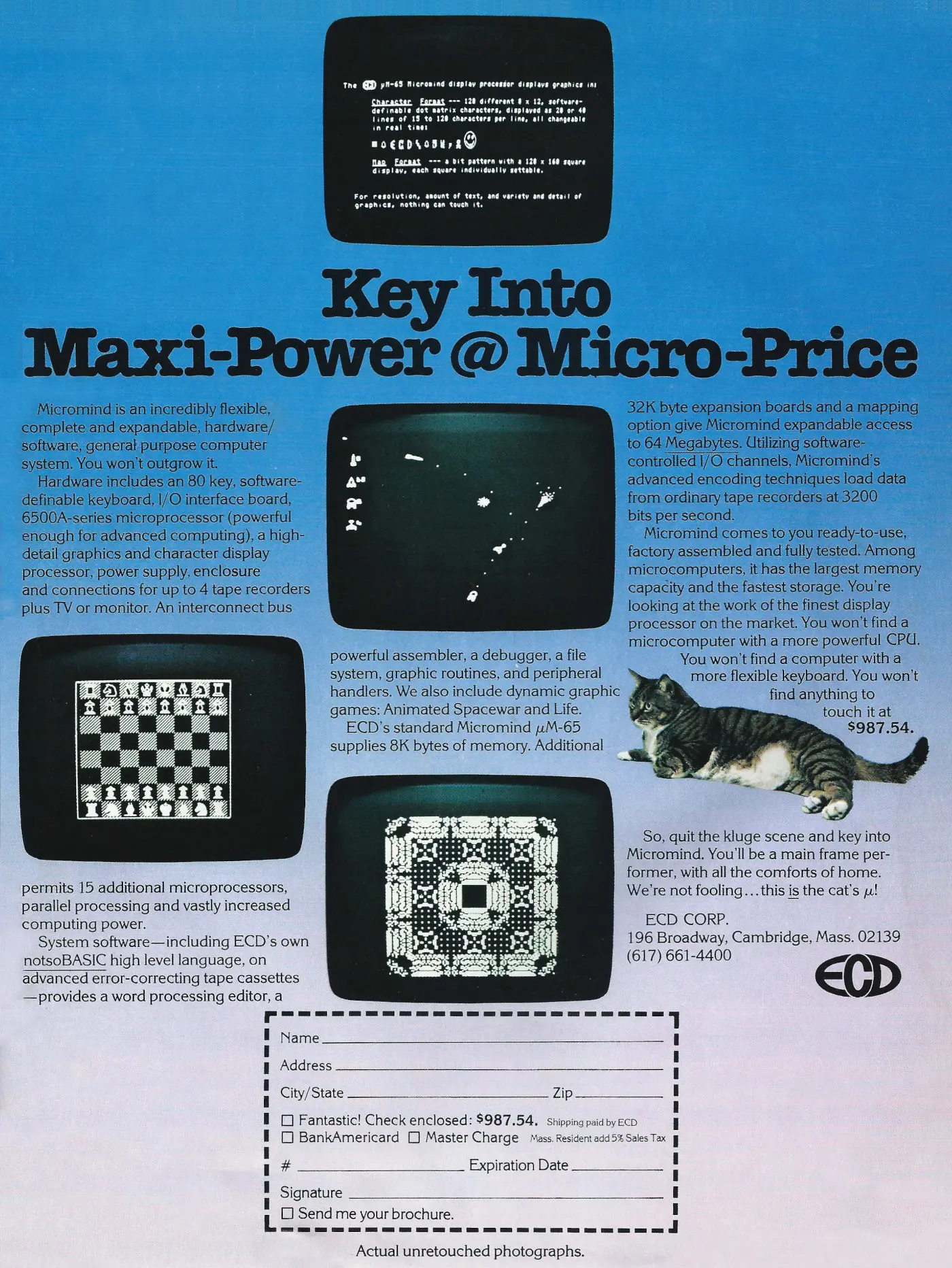
ECD Advert - August 1977
From Byte - The Small Systems Journal

Key into Maxi-power @ Micro-price
ECD was founded in Cambridge, Massachusetts, in November 1974[1]. Its first products were a capacitance meter and an industrial digital thermometer, both of which sold well.
At the end of 1976 the company announced the Micromind μM-65, which was based around MOS Technology's 6512 - a variation of the better-known 6502 but which used an external clock.
This was possibly useful because the Micromind was built with the CPU on a plug-in card, and the interconnect bus could take up to 15 additional processors - each of which would probably run at different clock speeds. It was even possible to run at least some of these in parallel.
The standard micro came with 8K of memory, but - also unusually - could support up to 64 megabytes, which was a huge amount at the time. To fully populate it (theoretically) when 64K boards retailed for around $1,495[2] would cost $1.5 million, or around £9 million in 2025.
ECD supplied its own version of BASIC, called notsoBASIC, as well as an assembler, graphics routines for its included hi-res graphics card - which supported 120 different user-definable 8x12 characters, outputting up to 120 characters per line - and a couple of games - Animated Spacewar and Life.
Much of this was additional software was written by Bob Frankston, who would later co-found Software Arts - the company which developed the world's first spreadhseet - VisiCalc - in 1979.
ECD later released the Micromind II, with Ronald Todd, the company's co-founder and President, suggesting that it could outperform minicomputers in the $40,000 class[3].
The II retailed for around $2,500, whilst the original Micromind retailed for the curiously-specific $987.54, or about £5,940 in 2025.
The company was wound up in October 1983.
Date created: 18 March 2024
Last updated: 17 October 2025
Hint: use left and right cursor keys to navigate between adverts.
Sources
Text and otherwise-uncredited photos © nosher.net 2025. Dollar/GBP conversions, where used, assume $1.50 to £1. "Now" prices are calculated dynamically using average RPI per year.